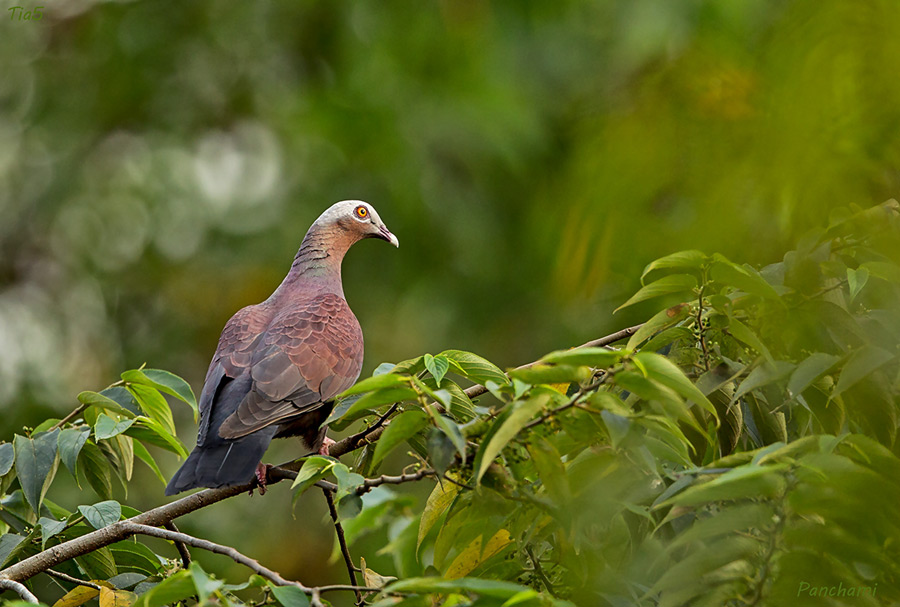
The Pale-capped Pigeon (Columba punicea) is a locally resident species in India that largely inhabits forest habitats, chiefly, primary or secondary evergreen forests, and bamboo and agricultural fields in close proximity to forests, its range extending from lowlands to 1600 msl. It had a wide distribution in the past but is now reported as uncommon and rare throughout much of its range (read detailed species account). It is listed as Vulnerable by IUCN and Birdlife International.
Recent sightings have been reported from Assam, Arunachal Pradesh, Odisha (Simlipal and Satkosia tiger reserves), and significantly from the Regional Plant Resource Centre (RPRC) in Bhubaneswar, Odisha.
The Bhubaneswar Bird Walks have been reporting regular sightings since 2013 at Ekamra Kanan in Regional Plant Resource Centre (RPRC) campus adjoining the Chandaka forest in Bhubaneswar. Ekamra Kanan is an urban park in the densely populated Nayapalli area of Bhubaneswar. It is a favourite haunt of morning walkers and approximately 200 morning walkers frequent this park every morning. In Ekamra Kanan, the birds usually perch on ornamental trees like Glircidia sepium. They feed on the berries of fruiting trees like Litsea glutonisa and Trema orientalis. RPRC campus has many such fruiting trees that fruit at different times of the year, thereby seeming to provide substantial feeding opportunities for this forest-dwelling species. This may be the reason why the shy forest birds have chosen to inhabit the campus despite hectic human activity. The birds have been observed in the campus from August to March in 2013 and 2014.
Odisha has emerged as a stronghold for this Vulnerable species and regular sightings in Bhubaneswar are encouraging. However the species is under constant threat due to depleting forest cover and habitat fragmentation. While it is a protected species under Schedule IV of the Wildlife Protection Act, 1972, any recommended site-based conservation strategies cannot be successfully implemented unless there is a constant monitoring of the movement of the species across seasons in the IBAs, Protected areas, and other habitats where the species is found. This needs a habitat-specific planned strategy and combined effort by government departments and NGOs who are actively involved in documentation of avian species.
Also read on Conservation India: In search of the Pale-capped Pigeon in Simlipal Tiger Reserve

 CI is a non-profit, non-commercial portal that aims to facilitate wildlife and nature conservation by providing reliable information and the tools needed to campaign effectively.
CI is a non-profit, non-commercial portal that aims to facilitate wildlife and nature conservation by providing reliable information and the tools needed to campaign effectively.
Chosen as 'Picture of the Week'
Odisha has emerged as a stronghold for this Vulnerable species and regular sightings in Bhubaneswar are encouraging. However the species is under constant threat due to depleting forest cover and habitat fragmentation.